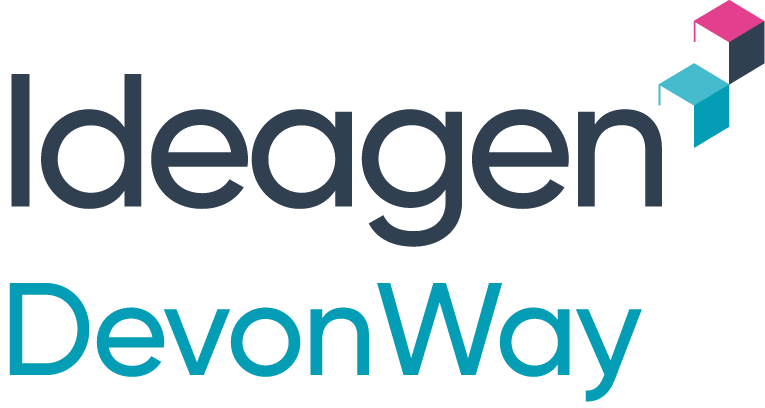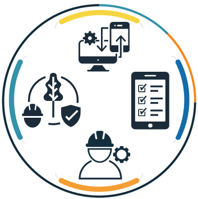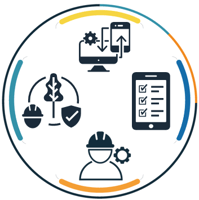
No matter if they’re working high in the air building a skyscraper or sitting at a desk using a computer, employees should always feel safe at work. Safety matters every day of the year – and every June, the National Safety Council (NSC) and National Institute for Occupational Safety and Health (NIOSH) share a focused reminder about the importance of keeping safety top-of-mind during National Safety Month.
National Safety Month encourages organizations across the country to pay extra attention to safety topics and best-practices in order to keep others safe at work and beyond. This year, National Safety Month 2023 is focused on emergency preparedness; slips, trips and falls; heat-related illness; and hazard recognition – featuring tips that every organization should keep in mind to protect its workers.
Emergency Preparedness
Emergencies can strike at any time, whether it's a natural disaster, release of hazardous materials, workplace violence, medical emergency or even the next pandemic. Making sure your organization is ready for the unexpected is critical to workplace safety.
Review these resources and tips to make sure you’re prepared for whatever emergency may occur:
- Learn CPR: As part of National Safety Month, the first week of June was dubbed National CPR and AED Awareness Week. See the importance of CPR in this survivor video and download the free NSC First Aid App.
- Prevent, mitigate and respond to violence: Workplace violence is a top occupational hazard. Be prepared with resources such as the NSC Work to Zero initiative, which believes safety technologies can help. Access a new report and playbook to help your employees be safe.
- Protect first responders: In order to protect emergency responders, NIOSH has developed the Emergency Responder Health Monitoring and Surveillance (ERHMS) framework, which shares recommendations for protecting emergency responders during small and large emergencies in any setting.
- Prepare for natural disasters: Storms, floods and hurricanes can be devastating, but being prepared can save lives. The NIOSH Storm, Flood, and Hurricane Response website provides information to help employers and workers prepare in advance for anticipated response activities, and to prevent work-related injuries and illnesses in the field once rescue, recovery and clean-up activities begin.
Slips, Trips, and Falls
Unfortunately, falls are found to be the leading cause of death in construction, making up about 35% of all construction fatalities from 2011-2021. Yet the risk of slips, trips and falls are present for employees in nearly every industry. In fact, the highest number of nonfatal fall injuries occur in health services, wholesale and retail sectors.
See how you can help prevent these serious injuries and fatalities:
- NIOSH has many fall prevention resources on its website, including the ladder safety app, the mast climbing work platform inspection tool, and the mining Infographic: Don’t Slip Up!
- Join the Safety Stand-Down, an annual event for employers to talk directly to employees about safety and to raise awareness about fall prevention.
- Read NSC’s Safety+Health magazine for articles on a variety of occupational safety health topics, including 7 Tips for Safe Use of Ladders and Reducing Slips, Trips and Falls.
Heat-related Illness
Occupational heat stress can happen to anyone when the combination of environmental factors, metabolic heat, clothing and PPE create risk for heat-related illness and injuries. This may result in heat stroke, heat cramps, heat exhaustion, heat rashes or rhabdomyolysis. Heat can also lead to injuries, such as someone becoming dizzy and falling, or when safety glasses get fogged up.
While employers can’t control the weather, they can be prepared for excessive heat. Here are some tips to help:
- Create a heat-illness prevention program, including ways to monitor the weather and environmental heat at worksites; creating controls (such as shade or ventilation); providing hydration resources; and providing heat-illness training to employees.
- Be aware of and watch out for early warning signs, and understand who might be most at risk, by reviewing this NSC resource, “Learn How to Avoid Heat-related Illnesses and Death”.
- Review additional resources provided on the NIOSH Heat Stress website.
- Note that children are sometimes inadvertently left behind in cars as a parent or caregiver arrives at work. Tragically, an average of 38 children die of vehicular heatstroke each year. Encourage your staff to take the NSC’s free online Children in Hot Cars training offered in both English and Spanish.
Hazard Recognition
Hazards can be anywhere in the workplace – and while some can be easily seen, like a cord strung across a walkway, others are less obvious, such as excessive noise exposure or chemical risks. While they are vast, hazards can be recognized and mitigated by a trained eye.
Here are just some of the hazard recognition tips shared through this year’s National Safety Month:
- Work-related fatigue can have serious consequences for worker health and safety. Fatigue detection technologies (FDTs) can help inform a fatigue risk management plan to help keep workers safe. Learn how to select, implement, and set objectives for an FDT for your workplace.
- The NIOSH Lifting Equation mobile application, NLE Calc, is a tool to calculate the overall risk index for manual lifting tasks to reduce the incidence of low back injuries in workers.
- One of the best ways to prevent and control occupational injuries, illnesses, and fatalities is to “design out” or minimize hazards and risks. A hierarchy of controls helps determine how to implement feasible and effective control solutions.
How DevonWay can help
When it comes to safety, every organization needs to have a clear overview of its Environment, Health and Safety (EHS) goals and data. DevonWay specializes in EHS software created for high-risk, highly regulated organizations that’s designed to break down silos and harness information from across all departments and traditional software boundaries.
Through its single, secure platform that aligns information and measures from across the organization, DevonWay empowers people to take action before incidents occur and enables post-incident analysis to improve safety going forward.
How can we help you improve safety in the workplace? Reach out today to request a demo today.
Related Posts
Join Ideagen at the NSC Safety Congress & Expo
The world’s largest safety event is happening this September, and Ideagen will be there as one of...
DevonWay & Rombit: A Powerful Partnership For More EHS Data
Every organization strives for environmental, health and safety (EHS) excellence – and achieving...
The journey to safety maturity: building a safer workplace culture
Safety in the workplace is many organization’s highest priority, especially for those in high-risk,...





